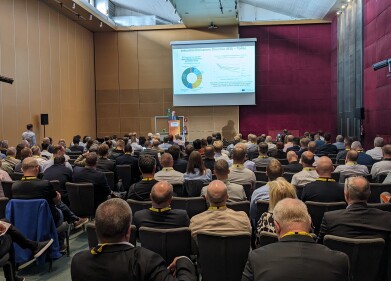Air monitoring
What Is the Medium Combustion Plant Directive?
Jun 24 2019
The Medium Combustion Plant Directive, or MCPD for short, is an EU-wide piece of legislation brought into to control harmful emissions of power plants across the bloc. First conceived of in 2013 and introduced into EU law last year, the MCPD applies to sulphur dioxide (SO2), nitrogen oxides (NOx) and dust and aims to improve air quality for residents living in the vicinity of these plants.
According to the EU, a medium combustion plant is defined as one which has a thermal input greater than or equal to 1 Megawatt thermal (1MWth) but less than 50MWth. As such, the directive will account for a legislative oversight between the Ecodesign Directive, which deals with small plants under 1MWth, and the Industrial Emissions Directive, which handles large plants equal to or greater than 50MWth.
History of the MCPD
The MCPD was first proposed in 2013, when it was raised as a suggested addition to the Clean Air Policy Package of the same year. There are approximately 143,000 medium combustion plants in the EU, used for a wide range of different purposes, all of which involve the emission of harmful contaminants such as those named above, among others.
As a result of investigations into the Clean Air Policy Package, a team of experts drew up a list of cost-effective emissions reduction measures which plants across Europe could implement to curb their emissions. The MCPD was created with those measures in mind, as well as incorporating obligations included in the Gothenburg Protocol on long-range, transboundary air pollution.
Implementing the MCPD
After several years of discussions, the MCPD finally came into effect on 20th December 2018 for all newly built plants. For those which are already in operation, the regulations will not come into effect until either 2025 or 2030, depending on the size of the facility in question. As well as limiting the maximum emissions of SO2, NOx and dust, the MCPD will also monitor carbon monoxide (CO) levels.
The European Commission has indicated that there is help available for individual members states seeking to learn more about how to go about complying with the new rules. For more information on the MCPD and its implications for your business, check out the online e-learning session Implementation of the Medium Combustion Plant Directive and Specified Generator regulations, the monitoring requirements and how they will be regulated.
Consequences of the MCPD
The responsibility for complying with the MCPD will fall to plant owners individually and member state governments collectively to ensure they meet their obligations. To achieve greater transparency, member states must submit official data about the performance of their medium combustion plants at five-year intervals, beginning in 2021. Further reports in 2026 and 2031 should indicate how well each country is doing in terms of achieving its overall objectives.
The MCPD has been specifically designed to be affordable for the small- and medium-sized enterprises (SMEs) that it targets, as well alleviating administrative workloads for companies and governments alike. In the long run, it’s hoped that the MCPD will successfully contribute towards greater air pollution control and improve air quality in and around plants across Europe.
Digital Edition
AET 28.4 Oct/Nov 2024
November 2024
Gas Detection - Go from lagging to leading: why investment in gas detection makes sense Air Monitoring - Swirl and vortex meters will aid green hydrogen production - Beyond the Stack: Emi...
View all digital editions
Events
Jan 12 2025 Abu Dhabi, UAE
Jan 14 2025 Abu Dhabi, UAE
Jan 20 2025 San Diego, CA, USA
Carrefour des Gestions Locales de L'eau
Jan 22 2025 Rennes, France
Safety, Health & Wellbeing LIVE
Jan 22 2025 Manchester, UK
.jpg)


















